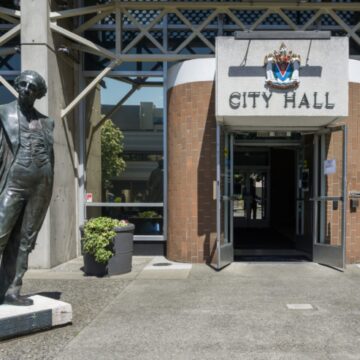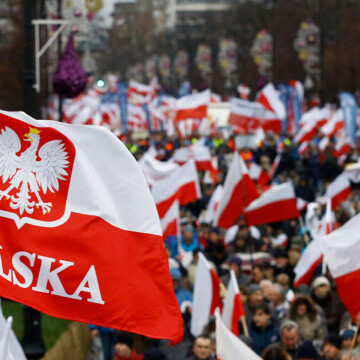The officially approved “left” and “right,” although riven in apparent conflict, in fact represent little more than a debate between managerial styles. The real class struggle today is between the supporters and the critics of the Western managerial-therapeutic regime.
Author: Mark Wegierski (Mark Wegierski)
Tearing Down Canada’s Past
Celebration of Canada Day in modern-day Canada is marked by official attempts to shame the nation’s history and tear down the monuments of its past. Canada is a “post-national state” and an archetypal example of a late-modern, so-called liberal democracy.
Why Freedom Persists in Poland and Withers in Canada
Why are Poles so conservative? And why are Western countries like the United States, and my country of Canada, so liberal? Although Poland claims to be Western and democratic, its government and culture are markedly different from those of Western countries such as Canada. Poland and Canada have been shaped by their pasts to evolve along...
The Failure of the Canadian Right
The Canadian federal election in October confirmed a long-term, leftward trend in Canadian politics. Despite Prime Minister Justin Trudeau’s blackface scandal, the Liberals retained power, winning a plurality of 157 out of 338 seats and 33.1 percent of the popular vote. Conservatives won 121 seats (34.4 percent of the vote), gaining truly overwhelming support from...
The Brave Professor
At the University of Toronto, one man has shown us just how uphill the climb is against political correctness, and what sort of reaction we may expect if we fight it. He may also have shown us how to win. In September 2016, in a series of lectures uploaded to YouTube, Jordan B. Peterson, an...
Demolition Day
The 150th Anniversary (or Sesquicentennial) of Canadian Confederation will be celebrated on July 1. That holiday was traditionally denominated “Dominion Day,” as Canada was officially called “the Dominion of Canada”—a term which has now fallen into disuse. The holiday is now called Canada Day, and on nearly all state documents, the Canadian state is identified...
The Media’s Triumph Won’t Last Forever
After the parliamentary and presidential elections of 2005, Poland finally appeared to have recovered from her postcommunist malaise, having brought a coalition of center-right and patriotic parties to power. These included the Law and Justice Party (PiS), led by the twin Kaczynski brothers, Lech and Jaroslaw; the ultra-Catholic League of Polish Families (LPR), led by...
A New Solidarity
The victory of Lech Kaczynski of the Law and Justice Party (with around 54 percent of votes cast) over Donald Tusk of the Civic Platform Party in the second round of the presidential election on October 23, 2005, augurs well for Poland. The socially conservative Kaczynski had claimed to represent the ideals of Catholic social...
An Anniversary Remembered
On Saturday, July 10, 2004, my cousin and I drove from Ciechocinek to Czestochowa, to attend a celebration of her grandparents’ 60th wedding anniversary. Ciechocinek is a spa and resort town about 200 kilometers northwest of Warsaw, Poland. Before the trip began, she had to stop by the aesthetics studio (a type of spa) she...
Polish-German Reconciliation in an Historic Town
On August 29, 2004, just before my departure from Poland, I attended an important ceremony at the small, historic town of Nieszawa, which lies near the Vistula River, about 200 kilometers northwest of Warsaw, in the Kujawy-Pomorze (Kuyavia-Pomerania) region or Voivodeship (Wojewodztwo). It was a sunny and rather hot day. The town, which currently has...
The Forgotten White Ethnics
I recently returned to Toronto from a long visit to Poland, a trip on a Polish LOT Airlines jet that took only nine-and-a-half hours but would have taken months in an earlier age. In general, Toronto represents one extreme of modern development, to which Poland is a happy opposite. Nevertheless, there is a considerable Polish...
A Model for the West
Ciechocinek lies about 200 kilometers northwest of Warsaw, near Torun, the birthplace of Nicolaus Copernicus, in the Kujawy-Pomorze (Kuyavia-Pomerania) region. It is a spa and resort town of about 14,000 permanent residents, known for its unique titration towers—large wooden structures with thick layers of bramble, through which water from nearby salt springs is filtered into...




